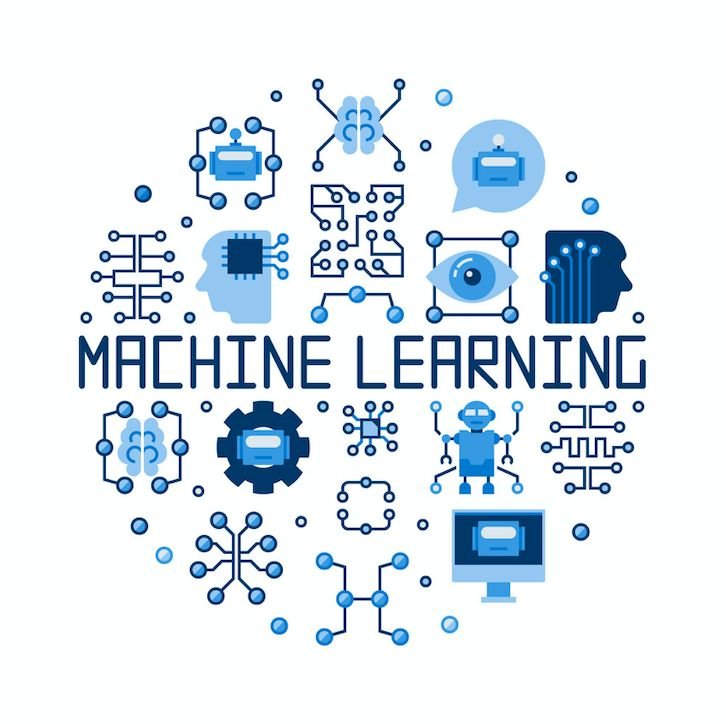Machine learning is an exciting and rapidly growing field, but to truly excel in it, a strong foundation in mathematics is essential. Understanding the mathematical principles behind machine learning algorithms allows you to develop more effective models, troubleshoot issues, and innovate new solutions. Here’s a step-by-step guide to help you learn the necessary mathematics for machine learning.
Step 1: Build a Strong Foundation in Basic Mathematics
Algebra
- Linear Equations: Understand how to solve linear equations and systems of linear equations.
- Matrices and Vectors: Learn about matrix operations, vector spaces, eigenvalues, and eigenvectors, as these concepts are fundamental in many machine learning algorithms.
Calculus
- Derivatives and Integrals: Know how to compute and interpret derivatives and integrals, which are essential for understanding optimization techniques used in training machine learning models.
- Multivariate Calculus: Study partial derivatives and gradient vectors, as these are critical for optimization algorithms like gradient descent.
Probability and Statistics
- Probability Theory: Learn about probability distributions, conditional probability, Bayes’ theorem, and random variables. These concepts help in understanding algorithms that involve uncertainty and variability.
- Statistical Methods: Get familiar with statistical tests, hypothesis testing, and regression analysis. These are important for data analysis and interpretation.
Step 2: Dive into Advanced Topics
Linear Algebra
- Matrix Decompositions: Study singular value decomposition (SVD), principal component analysis (PCA), and other matrix factorization techniques used in dimensionality reduction and data compression.
- Vector Spaces and Norms: Understand different vector norms and their applications in measuring distances in high-dimensional spaces.
Calculus and Optimization
- Gradient Descent and Optimization: Learn about various optimization techniques, including gradient descent, stochastic gradient descent, and advanced methods like Adam and RMSprop.
- Convex Optimization: Study convex functions, convex sets, and optimization problems, as they form the backbone of many machine learning algorithms.
Probability and Statistics
- Probability Distributions: Explore different probability distributions (e.g., Gaussian, Bernoulli, Poisson) and their properties.
- Bayesian Statistics: Understand Bayesian inference, Markov Chain Monte Carlo (MCMC) methods, and their applications in machine learning.
Step 3: Apply Mathematics to Machine Learning Concepts
Linear Regression and Logistic Regression
- Use linear algebra to understand the mathematics behind linear regression, including the least squares method and regularization techniques.
- Apply probability theory to logistic regression, understanding the logistic function and maximum likelihood estimation.
Support Vector Machines (SVM)
- Study the geometry and optimization principles behind SVM, including the concept of hyperplanes and the kernel trick.
Neural Networks and Deep Learning
- Learn about the mathematics of neural networks, including backpropagation, activation functions, and gradient-based optimization.
- Dive into advanced topics like convolutional neural networks (CNNs) and recurrent neural networks (RNNs), which involve linear algebra, calculus, and probability.
Unsupervised Learning
- Explore clustering algorithms like k-means and hierarchical clustering, understanding the role of distance metrics and optimization.
- Study dimensionality reduction techniques like PCA and t-SNE, applying linear algebra and statistical concepts.
Step 4: Utilize Resources and Practice
Online Courses and Tutorials
- Coursera: Courses like “Mathematics for Machine Learning” and Andrew Ng’s “Machine Learning” course.
- edX: Programs such as MIT’s “Introduction to Computational Thinking and Data Science”.
- Khan Academy: Offers comprehensive courses in algebra, calculus, and statistics.
Books
- “Linear Algebra and Its Applications” by Gilbert Strang: A great resource for linear algebra.
- “Pattern Recognition and Machine Learning” by Christopher M. Bishop: Covers probability and statistical methods in depth.
- “Deep Learning” by Ian Goodfellow, Yoshua Bengio, and Aaron Courville: An essential read for understanding the mathematics of neural networks and deep learning.
Practice Problems
- Kaggle: Engage in machine learning competitions and practice problems.
- Project Euler: Solve mathematical problems that require programming solutions, helping to strengthen your mathematical and coding skills.
Step 5: Engage with the Community
- Join Forums and Discussion Groups: Participate in communities like Stack Overflow, Reddit, and specialized machine learning forums.
- Attend Meetups and Conferences: Engage with other learners and professionals at events like NeurIPS, ICML, and local meetups.
Conclusion
Learning mathematics for machine learning is a journey that requires dedication and practice. By building a strong foundation in basic mathematics, diving into advanced topics, and applying these concepts to machine learning problems, you can develop the skills necessary to excel in this field. Utilize the wealth of resources available online, engage with the community, and continually challenge yourself with new problems and projects. Happy learning!





